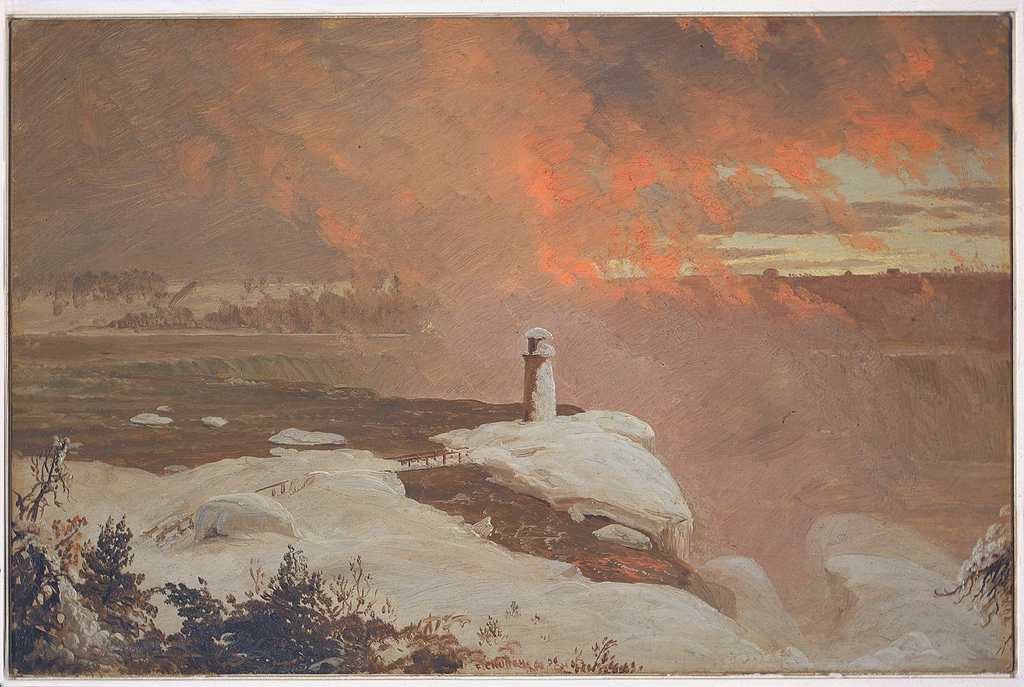“The trip was … one of risk … no one is allowed to sketch alive there … an artist who ventured there was shot while attempting a sketch … I flung open my sketchbook and drew the scene roughly … we then dashed down the path and seized another view and so on sketching and running…”[1] Frederic Edwin Church thus describes snatching a sketch in Petra. The perils of plein-air painting have long been admired—a 19th century version of the photo-journalist in the trenches. This oil sketch, probably a studio distillation of a scene painted outdoors on Goat Island, Niagara Falls, shows hasty hand- and brushwork, a feature of Church’s work less celebrated in his time than his more “finished” paintings. The latter were esteemed for their uniform surfaces: devoid of the artist’s mark, they purportedly revealed only “true,” “objective” nature. By contrast, his sketches reveal the artist’s initial impulse, his chosen focus, his process, and his thinking.
Viewing Church’s icy perch at Niagara’s edge reminds me of my own experiences painting outdoors in winter by frozen water, speedily brushing the sun’s cast colors onto canvas as they change before my eyes, my numbing hands producing decisive, unpredictable brush strokes. I can appreciate the gleeful challenge of capturing water, ice and mist in paint under duress.
In Church’s sketch the tower acts as an anchor against the rush of waves, ice, wind and air. Here, in this lull in the awe-inspiring onslaught of the Falls, diagonal streaks of orange-red move through the vapors, background and foreground collapsing in diagonal slashes.
Church and his friend and teacher Thomas Cole and others (collectively, “The Hudson River School”) isolated “pure” nature amidst a rising industrial American landscape. Omitting signs of modern life, they believed that in “pure” nature God’s presence unfolds. Adventuring to paint America’s natural wonders, the Hudson River painters enhanced the allure of increasingly touristic sites, resulting in commerce and industry that de-enhanced the very bucolic views the artists propagated.
The ephemeral quality of Church’s sketches is closer to modern taste than his “finished” paintings. An exhibit, Through American Eyes: Frederic Church and the Landscape Oil Sketch, through April 28, at the National Gallery in London, includes some Niagara sketches from the Cooper-Hewitt collection.
[1] Frederic Edwin Church, Petra Diary, 1868, p.38-40, Olana Archives
